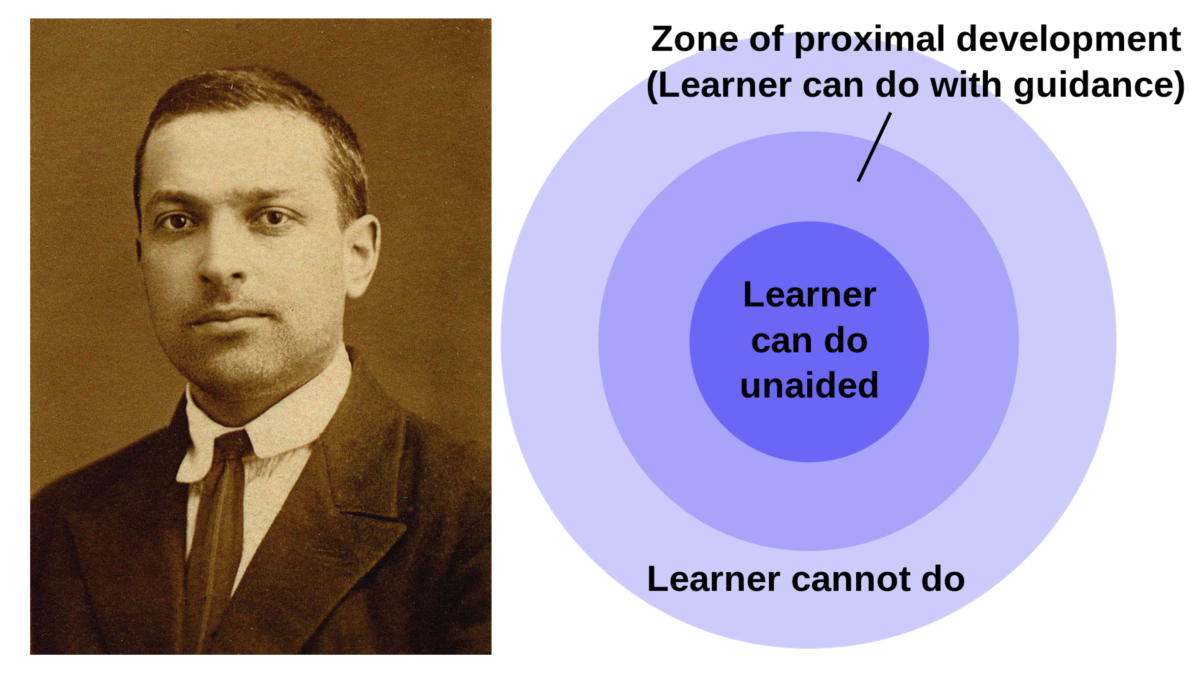If you’re a teacher, who received your teaching certification some time in the last thirty years, you’ve probably heard of Vygotsky. If you’re not a certified teacher, and are either trying to homeschool for the first time or currently only have your CETLA or TEFL certification, you probably have no clue who he is. That’s okay, I didn’t when I started my Master in Education, either, and there is no real logical reason you should have heard of him or come across him before. This article is for you: a basic introduction to Vygotsky and what he called the Zone of Proximal Development, (ZPD).
Lev Vygotsky was a Russian born middle class Jew, caught up in the wave of communist and socialist education of the late 1800’s and early 1900’s. He was first to pen down what many teachers would consider simple logic. Most “classical” learning takes place when a learned other guides a student from a place of not knowing to a place of knowing. This liminal stage is what Vygotsky termed the ZPD. His theory didn’t stipulate that the learner be of any particular age, or possess any specific cognitive prerequisites. Rather, it worked on the notion that learning was social and with the right help, anyone could learn.
But how did one get from the state of not knowing something, to a state of knowing something? Well this ZPD is the critical point in which a student is transformed. It’s not a matter of simply the teacher telling the student, and the student remembering. Rather the student is provided a structure to learn around. This is accomplished by what we now call scaffolding. It’s a term that you’ve probably heard thrown around loosely among teachers and teaching websites. Scaffolding in education works just like scaffolding on a construction site. First, the knowledgeable other, the teacher, provides examples and guidance to help the person that is not knowing, the student. In this manner, the student is able to complete a task they otherwise wouldn’t have been. This is like the wooden scaffolding frame built under a stone arch that supports a bridge, or computer tutorials that guide you the first time you start a new software (like Clippy the Microsoft assistant, who would always pop-up on your screen back in the 2000s.)
As the student progress through the stage of not knowing, less and less of that scaffolding is needed. The teacher can step back and allow the student to complete the task on their own. Eventually the student is able to complete a task, or demonstrate knowledge of a subject without the assistance of the teacher. Going back to the stone bridge, this is when the keystone at the apex of the arch has been inserted and the arch can stand on its own. Similarly, it’s when we finally turned off Clippy, our trusty bouncy Microsoft companion, because his help was no longer needed.
The beauty of this theory is that it can be applied to all ages, and practically all steps. It can even be applied to concepts such as learning how to learn, turning students into life long learners. It can be applied to simple things like learning how to ride a bike, or even complex things like building websites and coding.
As a student and a teacher I have found this to be extremely useful. Take for instance building a website, when left on my own I can build a relatively okay website with some basic navigation. I may have some understanding of what I did, but so much energy was put into simply trying to discover the correct commands, that I often forget all the many steps it took to get there. But under the guidance of a skilled teacher, I am able to learn how to do tasks easier, faster, and divert more attention to learning and remember the process of how the website was made.
For my students, scaffolding provides me with tools to increase their abilities. If I’m coaching a student on how to run competitively I don’t simply say “run faster,” rather I demonstrate how to extend one’s gate, exercises that aid in breathing and ergonomics, and then have the student practice those skills. By the time I am finished coaching, the student can practice on their own to make themselves a better runner based on the scaffolding I provided.
To more on Vygotsky and extended theories on social learning, I highly recommend checking out Simply Psychology, and Edutopia.
